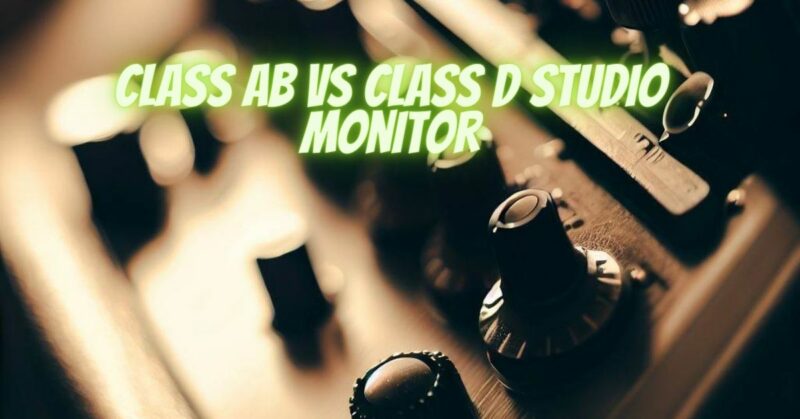When choosing studio monitors, one of the most important factors to consider is the amplifier class. There are two main types of amplifier classes used in studio monitors: Class AB and Class D.
Class AB Amplifiers
Class AB amplifiers are the most common type of amplifier used in studio monitors. They offer a good balance of power, efficiency, and sound quality. Class AB amplifiers work by using two transistors to amplify the signal. One transistor is turned on when the signal is positive, and the other transistor is turned on when the signal is negative. This allows Class AB amplifiers to produce a very clean sound with minimal distortion.
Class D Amplifiers
Class D amplifiers are a newer type of amplifier that is becoming increasingly popular in studio monitors. They offer higher efficiency than Class AB amplifiers, which can lead to lower power consumption and heat output. Class D amplifiers work by using a switching power supply to amplify the signal. This allows Class D amplifiers to produce a very clean sound with minimal distortion.
Which Type of Amplifier is Right for You?
The best type of amplifier for you will depend on your individual needs and preferences. If you are looking for the best possible sound quality, then a Class AB amplifier is a good choice. However, if you are looking for an amplifier that is more efficient and produces less heat, then a Class D amplifier is a good option.
Here are some additional factors to consider when choosing between Class AB and Class D studio monitors:
- Power: Class AB amplifiers typically have more power than Class D amplifiers. This can be important if you are looking for loud sound.
- Efficiency: Class D amplifiers are more efficient than Class AB amplifiers. This can lead to lower power consumption and heat output.
- Sound quality: Both Class AB and Class D amplifiers can produce a very clean sound with minimal distortion. However, some people believe that Class AB amplifiers have a slightly warmer sound than Class D amplifiers.
- Price: Class AB amplifiers typically cost more than Class D amplifiers.
Both Class AB and Class D amplifiers can be a good choice for studio monitors. The best type of amplifier for you will depend on your individual needs and preferences. If you are not sure which type of amplifier is right for you, it is a good idea to audition a few different models before you make a purchase.
Here are some additional tips for choosing studio monitors:
- Make sure that the monitors are compatible with your audio interface. The monitors and audio interface should have the same impedance rating.
- Consider the features you need. Some monitors have features such as built-in amplifiers and digital signal processing that can improve the sound quality of your system.
- Read reviews. Read online reviews of different monitors before you make a purchase. This will help you get a sense of what other people think of the different models.
- Test drive. If possible, try out different monitors before you buy them. This will help you hear the difference between the different models and choose the one that sounds best to you.


